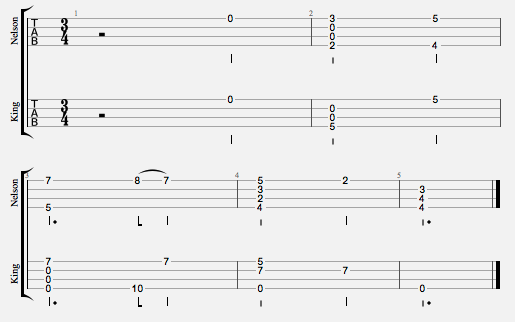Bob Brozman’s Ukulele Tunes & Techniques (DVD)
Bob Brozman is one of my musical heroes. A quick check on YouTube will show you why. It’s not just his playing, it’s his musical philosophizing too. He’s always interesting and often highly quotable (the quote of him on my About page is from this DVD). All that meant that buying this DVD was a bit of a no-brainer for me.
The DVD has Brozman playing through different arrangements of a number of Hawaiian and American tunes tabbed out in the accompanying booklet. Towards the end, he is joined by Hawaiian guitarist and ukulelist Ledward Kaapana. Brozman’s tunes are arranged on D-tuned ukulele and Kaapana’s tunes for low-G ukulele.
The full tab list is:
Hi’ilawe, Meleana’E, The Beach at Waikiki, Ukulele Blues, Sweet Georgia Brown, I’ll See You In My Dreams and Spanish Eyes (Kaapana).
There are also untabbed performances of Ukulele Spaghetti, Tomi Tomi and L&D Slack Key (Kaapana).
The Good Stuff:
– Techniques. This DVD was a huge inspiration on my playing. Each time I watch it I’m itching to to try something new I’ve picked up from it.
– Some of the stuff Brozman pulls off is just fantastic to watch and hear.
– There’s a lot to be learnt here about how to use chord inversions and how to incorporate them into chord solos.
– Some very good examples of how to arrange the same song in different ways to keep it interesting.
– Ledward Kaapana. He’s a big teddy bear and probably the most adorable man in the world. He also pulls of tricks in L&D Slack Key that are worth the price of admission by themselves.
The Not So Good Stuff:
– Tunes. I haven’t learnt a single tune from the DVD. It’s sometimes hard to work out exactly which piece of tab is being played. Sometimes what is being played isn’t tabbed out at all. Brozman turns in a fantastic fingerpicked version of The Beach at Waikiki but all we get tab for is the strummed version. When I watch this DVD I promise myself I’m going to learn one of the songs but it never happens.
– Kaapana isn’t a natural teacher. Bob has to play both faux-naif “What ya doing there, Led?” role and the know-it-all teacher role.
– Tunings. Bob’s in D-tuning which makes chord names confusing for C-tuners (particularly if they’re a bit slow in the head like me). Led’s in low-G which isn’t really a ukulele.
Overall: Inspirational.










